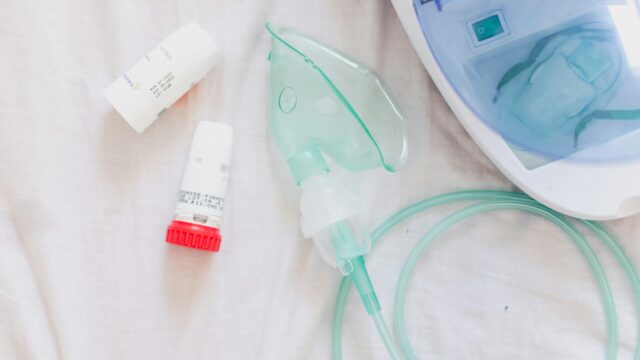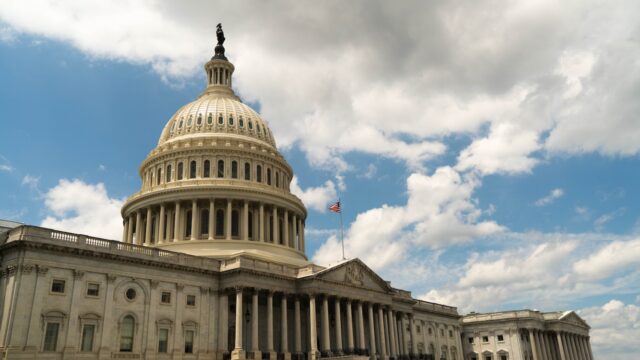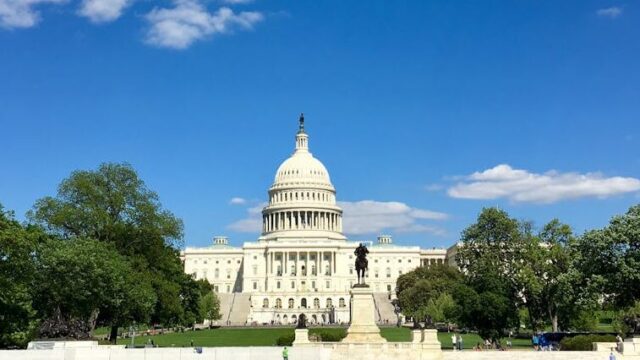Domestic and global antimicrobial resistance programs need more federal funding to fully address this public health threat
May 2024

BCHC signed onto a letter urging the Senate Labor, Health and Human Services, Education, and Related Agencies, Agriculture-Rural Development-FDA, and State and Foreign Operations Appropriations Subcommittees to increase federal funding for domestic and global antimicrobial resistance (AMR) programs. We call for a comprehensive One Health approach that encompasses human, animal, and environmental health with increased funding for surveillance, prevention, stewardship, research, and innovation.
Antimicrobial resistance is one of the greatest public health threats of our time. Drug-resistant infections sicken three million people and kill at least 50,000 people in the United States each year. Just six of the worst resistant pathogens increase U.S. health care costs by $4.6 billion annually. Infections are a primary or associated cause of death in 50% of patients with cancer, as AMR can make these infections difficult or impossible to treat. Globally, resistant infections directly caused 1.27 million deaths in 2019 and played a role in 4.95 million deaths. For example, sepsis, the body’s life-threatening response to infection is a dangerous complication of AMR and is the number one cause of death and cost of care (at $62 billion annually) in U.S. hospitals. If we do not act now, antibiotic resistant infections will be the leading cause of death by 2050 and could cost the world $100 trillion.
Small companies that are responsible for nearly all current antibiotic innovations are struggling to stay in business.
AMR has a disproportionate impact on certain communities due to variance in risk of exposure, susceptibility to infection or treatment received. Rates of several serious antibiotic resistant infections, including community-associated MRSA, are higher incidence in Black populations.
Addressing AMR is central to strengthening our preparedness for future public health emergencies, as patients with respiratory infections, serious wounds or burns, or other conditions requiring hospitalization are all at risk for secondary resistant infections. A 2022 CDC report found that hospital associated AMR infections and deaths rose 15% in 2020 due to the COVID-19 pandemic, wiping out progress made in 20212-2017 to lower U.S. deaths from AMR.
Safe and effective antimicrobials are essential to enable modern medical advances, including cancer chemotherapy, organ transplantation and other complex surgeries, which all carry a risk of infection. A recent outbreak of drug resistant eye infections causing blindness due to contaminated eye drops demonstrates that serious resistant infections are a threat to us all.
Unfortunately, the pipeline of new antibiotics in development is insufficient to meet patient needs. Small companies that are responsible for nearly all current antibiotic innovations are struggling to stay in business. Factors unique to antibiotics, including the need for their judicious use, make it challenging for companies to earn a return on investments in antibiotic research and development. Additionally, new diagnostic tools are needed to help guide appropriate antibiotic use and enable surveillance, and greater investments are needed to support prevention and antibiotic stewardship.
Increased federal appropriations commensurate with the gravity and importance of AMR are urgently needed to improve our defenses against this escalating health crisis. For FY25, we recommend:
Labor, Health and Human Services, Education and Related Agencies
The Centers for Disease Control and Prevention (CDC)
We recommend $400 million in funding for the Antibiotic Resistance Solutions Initiative. This is needed to expand antibiotic stewardship across the continuum of care; double state and local grant awards; expand the AR Laboratory Network globally and domestically to strengthen the identification, tracking and containment of deadly pathogens; support antimicrobial resistance (AMR) research and epicenters; and increase public and health care professional education and awareness.
We recommend $175 million for the Advanced Molecular Detection (AMD) Initiative. Funding would ensure continued innovation in the detection and tracking of existing and emerging resistant pathogens. Funding would also enable federal, state, and local public health laboratories to expand the use of pathogen genomics, sustain important partnerships with academic research institutions, and bolster training to ensure integration of genomics into AMR surveillance and response.
We recommend $60 million for the National Healthcare Safety Network (NHSN). Full funding is needed to modernize and automate NHSN to alleviate reporting burden and speed access to actionable data. Funding would bolster data collection on antibiotic use and resistance in healthcare facilities and provide technical support for more than 65,000 users of NHSN.
We recommend $1.002 billion overall for the CDC Center for Global Health, including the Division of Global Health Protection ($456.4 million). Increased resources are needed to improve global health capacity to stop AMR threats before they reach domestic soil as well as address growing drug resistance in developing countries. This Division works to enhance AMR surveillance systems, strengthen laboratory capacity, train health care workers and disease detectives, improve antibiotic use, provide technical assistance to 30 countries and support emergency operations centers. Funding would expand global health capacity address threats in 60 countries.
Assistant Secretary for Preparedness and Response (ASPR)
We recommend funding of $330 million to support the Broad-Spectrum Antimicrobials Program and CARB- X at the Biomedical Advanced Research and Development Authority (BARDA). The BARDA broad spectrum antimicrobials and antifungals program and CARB-X leverage public/private partnerships to develop innovative products that prevent, detect, and treat resistant infections. These efforts have led to new FDA approved antibiotics. Despite this progress, the pipeline of new antibiotics and antifungals in development is insufficient to meet patient needs.
We recommend funding of $200 million for the Project BioShield Special Reserve Fund, Broad Spectrum Antimicrobials. The Project BioShield SRF is positioned to support the response to public health threats, including AMR. BARDA and NIAID efforts have been successful in helping companies bring new antibiotics to market, but those companies now struggle to stay in business and two filed for bankruptcy in 2019, with others on similar trajectories. In 2019, SRF funds supported a contract for a company following approval of its antibiotic—a phase in which small biotechs that develop new antibiotics are particularly vulnerable. In October 2022, a second contract was awarded through Project BioShield to support the development and procurement of a novel antimicrobial product that addresses multi-drug resistant infections and supports national preparedness efforts. Full funding is needed to expand this approach.
National Institutes of Health (NIH)
We recommend $7.151 billion for the National Institute of Allergy and Infectious Diseases, including $608 million for AMR Research at NIAID. Funding at this level would allow NIAID to address AMR while carrying out its broader role in supporting infectious diseases research. Increased funding would support the training of new investigators; enhance basic, translational, and clinical research on mechanisms of resistance, therapeutics, vaccines, and diagnostics; and support the development of a clinical trials network to reduce barriers to research on difficult-to-treat infections.
Department of Agriculture – Food and Drug Administration
Food and Drug Administration
We recommend $20 million to support FDA’s One Health efforts to combat antibiotic resistance bacteria. This level of support is required to measure changes in antibiotic stewardship in animals and to protect antibiotic effectiveness for human and animal populations. With suggested resources, FDA can complete the remaining goals of its 2018 five-year antibiotic stewardship action plan and begin implementation of it new plan, including strengthening the National Antimicrobial Resistance Monitoring System (NARMS) to make it consistent with One Health principles, and issuing a final guidance on establishing duration limits to ensure that all FDA-approved veterinary indications carry duration limits needed to protect public health. This funding could also advance FDA’s plan to create and implement a functional and efficient system for collecting antimicrobial use data in animals. This additional funding is needed to assist academic institutions and other partners in the development of veterinary educational materials, and support surveillance capacity-building through FDA’s Veterinary Laboratory Investigation and Response Network (Vet- LIRN).
US Department of Agriculture (USDA)
We recommend an increase of $85 million for antimicrobial resistance priorities at USDA. With most emerging diseases and pandemics originating from animals, including food animals, USDA needs more resources to support its work on biodefence to protect both people and animals from resistant infections that are transmitted between humans and animals (zoonosis). An increase of $25 million for the Animal and Plant Health Inspection Service is needed to strengthen the Zoonotic Disease Management program, which has been chronically underfunded, and to support the and the National Animal Health Laboratory Network (NAHLN). At least $60 million in additional funding is needed for Research, Education, and Economics to support agricultural research at USDA’s Agricultural Research Service (ARS) and the National Institute of Food and Agriculture (NIFA) Agriculture and Food Research Initiative (AFRI). These funds will enable USDA investigators and scientists at public universities, veterinary colleges and other research settings to better understand the factors driving the emergence of resistant pathogens, and help producers find new vaccines, antibiotic alternatives and improved animal management and husbandry practices that can be shared directly with farmers and livestock growers through USDA’s Cooperative Extension Service.
Department of State and Foreign Operations
US Agency for International Development (USAID) and Department of State
We recommend $1 billion for USAID global health security efforts to enhance technical assistance to partner countries to prevent and respond to rising rates of AMR in resource-limited settings and strengthen global capacities to prevent and respond to outbreaks while improving U.S. and global health security. We also recommend $1 billion for USAID’s Tuberculosis Program, which supports high-quality screening, diagnosis and treatment services for patients affected by multidrug-resistant TB. Finally, we recommend $2 billion for the Global Fund to Fight AIDS, TB, and Malaria to allow continued reductions in malaria and TB and help staunch the growth of drug-resistant forms of these infections including airborne, drug-resistant TB, the biggest infectious disease killer globally in addition to COVID-19.
Read the letter
Download now Read the letter

